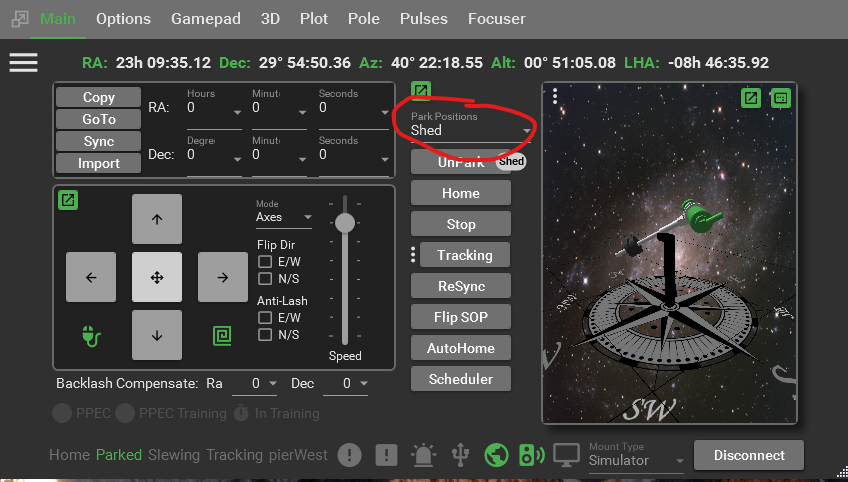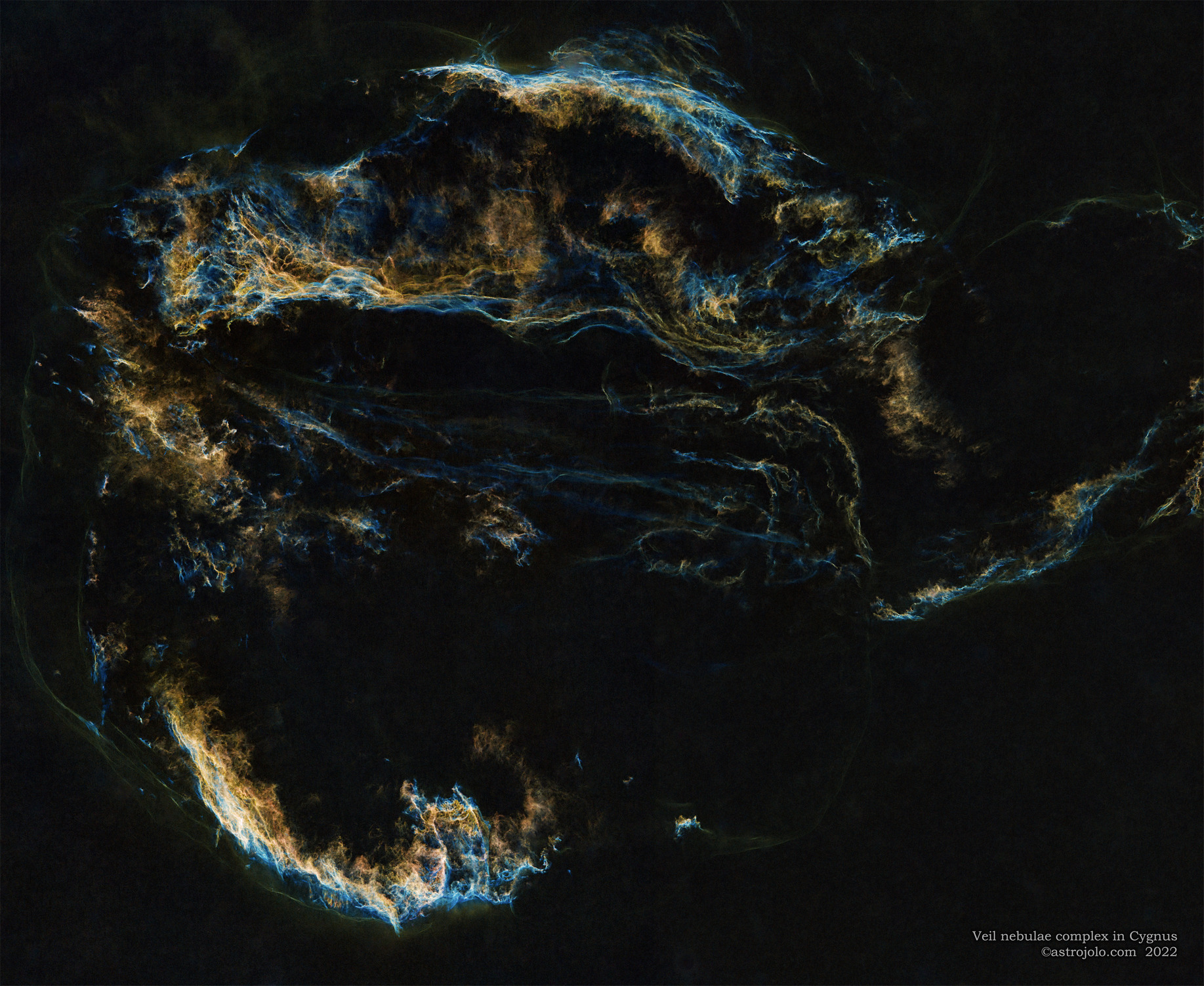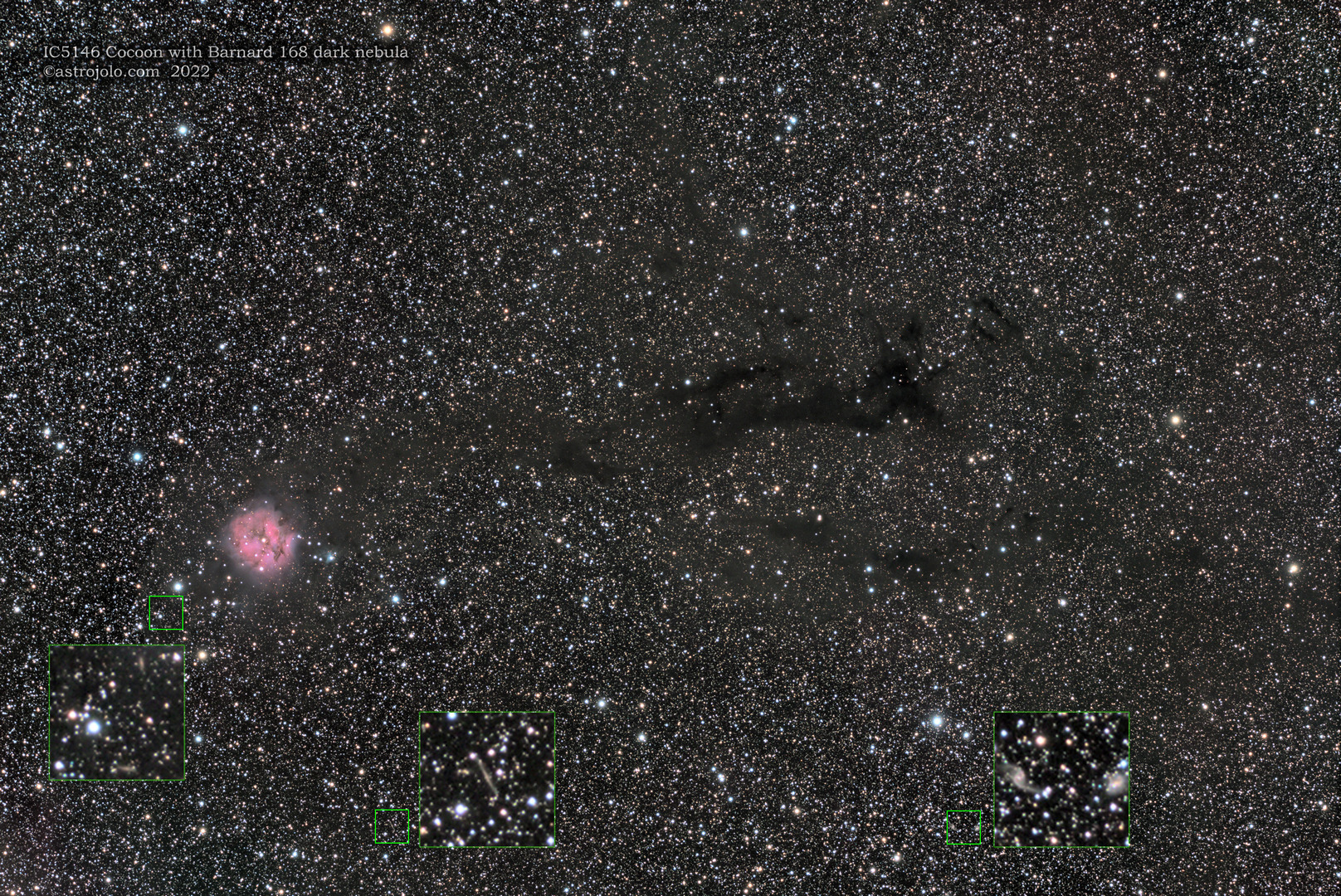-
Posts
493 -
Joined
-
Last visited
-
Days Won
1
Content Type
Profiles
Forums
Gallery
Events
Blogs
Posts posted by drjolo
-
-
I have used aluminium foil folded few times (squeezed in vise between flat surfaces) and placed between spacers in the optical train to correct tilt. I also once tried kapton tape (3 or 4 layers as I remember) once and that also worked okay.
-
Hi Peter,
I would suggest you to give another driver a try - a GS Server https://greenswamp.org/ (assuming you have a SW mount). You can clearly set and then select a park position in the driver and when the driver receives park position command it turns the mount to that position.
I remember I also had problems with park positions in EQ mod.

-
 1
1
-
-
-
Imaging dark nebulae under suburban light polluted skies is maybe not a good idea, but sometimes sky over my backyard is pretty transparent so I can even spots stars as "faint" as 5mag (at zenith of course). I had a few such nights in September this year, so LDN673 nebula was picked up from my list and here is the result.
Equipment used: EQ6, TecnoSky Owl 90/540 with 0.8x FF/FR, QHY268M camera and ASI290M + Evoguide 50D as guiding. It is total about 5 hours of LRGB subframes collected with SGPro, processed with Pix and Photoshop.
-
 6
6
-
-
It depends if you maybe already have any Nikon or Canon lenses - then you may fit the camera to your equipment.
Canon 6D and Nikon D600 are proven performers, but they are full frame cameras and your triplet will require some decent flattener to cover that area.
Nikon D5300 and D5500 are also quite well, they have the same sensor as QHY247C camera which I owned for some time and was very happy about it.
Friend of mine recently purchased modded Rebel T7 (2000D) and I am really surprised with low noise and quite good sensitivity.
T4i (650D) is also good performer in astrophoto, however it is a bit older model.
It looks they have a selection of the cameras, that are quite good for astrophoto, and the price is more less proportional to the outcome you may expect. There is also a reasonable entry at their page https://www.astrogear.net/blogs/guides/mirrorless-vs-dslr-vs-cooled-cameras , but I have no experience with mirrorless cameras for astroimaging, so cannot comment on that

-
 1
1
-
-
Modded modern DSLRs are quite capable cameras. There are some useful filters available (light pollution, narrow dual band), the field of view is reasonable, easy to use without computer (just programmable remote shutter release cable). Focusing with live view and digital magnification is easy. Also QE is not bad when compared to dedicated OSC cameras.
-
13 minutes ago, tooth_dr said:
Side by side ZWO2600 and QHY268 in a high humidity area - zero dessicant changes ZWO, several with QHY.
I think that is quite random, not only in Chinese cameras

QHY163M - always dry, QHY247C - desiccant every 1-2 months, QHY163C - dry, QHY268M - dry.
Atik314L+ - dry, Atik383L - desiccant replacement every 3-4 months.
-
 1
1
-
-
23 hours ago, Trippelforge said:
I kind of flipped through some stuff on AB and noticed that the more affordable options were pretty capable. The only companies I really had checked out were ZWO and Player One. You mentioned saving some cash? What other companies are worth checking out?
I would be very conservative on comparing the camera capabilities on fully processed AB images - you can easily find images made with old CCD sensors looking better than images made with 80% QE new CMOS sensors. Image processing skills play a big role.
What vlaiv wrote is the best approach to conclude such big topic in such a short post. Selection the camera requires some context - at least available optics, sky quality and preferred targets should be also considered.
-
I have my QHY268M in the observatory for about a half year right now. During that time I had two connection drops and no dessicant changes. There is a humidity sensor inside QHY268M so you can easily say if there is a need to refresh dessicant - I am not sure if that is also present in QHY268C.
-
I use Starnet++ to remove stars on semi stretched images - so then after star separation there is still a room to both process the stars separately and stretch the nebulosity more. Removing stars with Starnet is quite simple, so it is easy to play a little and check what stretch amount will give the best result in the starless image.


-
 2
2
-
 1
1
-
-
1 hour ago, justanothermidlifecrisis said:
I too am looking to build my first observatory and at present I'm trying to choose the best location for a pier.
I'm in Cardiff, UK and I'm wondering if I should be prioritising the Northern or the Southern skies?I would say in general Southern sky is preferable. Northern star is somehow stationary - the same objects just rotates around the pole. Southern sky is both more interesting as more deep sky targets are visible, but also different constellations are travelling across the Southern part of the sky during the year.
-
On 12/11/2022 at 20:38, MG01 said:
What mini pc do you use @drjolo?
I use Gigabyte BRIX with i5 and 8/240 GB. Plate solving with ASTAP is a few seconds operation for my setup ( QHY268M camera with 90mm refractor ).
-
 1
1
-
-
I also vote for having all acquisition software on the remote PC. I do not know what are the specification of that mele quieter, but probably something more than Atom processor.
I use SGPro with PHD2 multistar guide and that works perfectly well on i3 CPU and above (currently I use i5 machine). Also have there CdC for reference and ASTAP for preview and quick analysis.
On Atom or Celeron J-something it was usually a pain, and CPU load was very close to 100%.
-
 1
1
-
-
35 minutes ago, CraigT82 said:
I wonder if oversampling helps by making the finest detail captured physically larger in the image than the pixel scale shot noise.
If the smallest details the image contains are larger (occupy more pixels) than the noise, then does that make it easier to sharpen the detail without sharpening that noise?
Conversley if the smallest details are only occupying two pixels (if properly sampled) then does it become more difficult to then sharpen that detail without also sharpening the pixel scale noise as they are much closer in size?Probably that kind of noise is easier to reduce in the first place. Then sharpening may have better effect. Depending on the software used these both processes may be done in the same place.
It is also easy to simulate - get some Juno probe or Damian Peach images, scale it as you want, blur it, add some random noise as much as needed, and then process.
-
 1
1
-
-
Okay, I thought that discussion is about image quality loss due to the oversampling of the same image - like we have image from C14 at f/22 and f/15 for example.
I can understand oversampled image has lower SNR compared to correctly sampled, but the detail loss caused by this is not so easy to model, and that is not shown in the examples you provided.
-
 1
1
-
-
5 minutes ago, vlaiv said:
Why do you think it is misleading?
Oversampling is different sampling for the same image given by the optics.
In the example we have different images given by different optics.
-
 1
1
-
-
9 minutes ago, vlaiv said:
I think this comparison may be a bit misleading. The idea being discussed here is image quality losses due to the oversampling, and the example shows something different.
Perfect example would be to see the same image 2x and 4x sampled, possibly after processing and see the difference caused by the lower SNR in this second one.
-
 1
1
-
-
You may check the RJ flat cable between mount head and Dec motor using multimeter - if all connections are okay. If they are then probably there is not much else you can check. Contact with iOptron tech support, they answer quite fast.
-
I have now mounted this refractor in my roll-off shed, so all the following images was made using old but capable EQ6 mount

Other equipment used: TecnoSky 90/540 Owl, 0.8x adjustable FF/FR, QHY268M camera, Baader 36mm CCD filters and my suburban sky with sky brightness level usually around 19-19.5 mag/arcsec2.
Cr399 Coathanger asterism, about 3 hours of exposures with LRGB filters. Cr399 was discovered in 1931 by Per Collinder as an open cluster. Then 40 years later it turned out these stars are located at different distances actually

Sh2-155 Cave nebula - about 18 hours of exposure with HSO narrowband filters plus 1 hour RGB for stars.
Sh2-171 emission nebula in Cepheus. Several dark clouds inside with Berkeley 58 open cluster in the upper right part of the nebula. About 18 hours of exposures via HSO filters plus about 1 hour RGB for stars.
IC5146 Cocoon with Barnard 168 dark tail - LRGB exposures 200:80:60:50 x 2 minutes. Some galaxies can be spotted between all these stars (second image)

Veil in Cygnus - two panels mosaic, each panel is 6 hours of exposure. With and without stars.
Several Barnard dark clouds (169, 170, 171, 173, 174) and LDNs near Zeta Cephei star. LRGB 180:40:20:30 x 2 minutes.
Sh2-132 "Lion" nebula in Cepheus. It eventually appeared much fainter than I expected, so processing was not so easy for me. 18 hours of data with HSO narrowband filters.
Small blue dot in lower right part is a PN G101.5-00.6 planetary nebula - 1.3 arcmin diameter.More data is already in the way through space

-
 4
4
-
-
Just processed some data captured already in March. 90mm refractor is maybe not the best option for small targets, but since it has "owl" in its name, I could not miss that target

Tecnosky 90/540 Owl, 0.8x FF/FR, iOptron CEM26, QHY268M, LRGB 120x2 minutes. Suburban sky, transparency good, Bortle 6, march 2022. Larger version after click.
-
 5
5
-
-
Thanks!
After posting this starless image I noticed small dot in the upper right part and wondered if that was not removed star or what. But that is PK 76+1.1 planetary nebula, that is (according to http://simbad.u-strasbg.fr/simbad/sim-basic?ident=PK 76%2B1.1) located 4000pc away, so much further than IC1318. Nice, small ring (20 arc seconds diameter).
Full mosaic frame with stars:

Top right part zoomed (PN can be noticed already):

And full zoom 1:1:

Maybe someone with bigger scope will catch it better

-
 4
4
-
-
I was able to collect two more panels over the last few nights, and here are three of them already merged. Stars removed, but this small patch of light little bit below and right of the center is the Sadr remnants. North is left.
Tecnosky Owl refractor 90/540, 0.8xx FF/FR, QHY268M, iOptron CEM26, Baader Ha filter, 3 panels mosaic, 50x3 minutes each. Larger version after click.
-
 5
5
-
-
Cygnus is rising slowly at the night end, so I decided to find out how much data I will need for a single panel of mosaic to my autumn project. I captured 2.5 hours and processed it hardly, and it seems to be a reasonable amount of data. There is so much hydrogen in this area, that it is hard to determine the final number of panels, so it will probably be a long living project

Imaged with Tecnosky Owl refractor 90/540, 0.8xx FF/FR, QHY268M, iOptron CEM26, Baader Ha filter, 50x3 minutes, stars removed with Starnet. Suburban sky with SQM reading about 19.50 mag/arcsec2. Image is stretched much, so it is not easy to recognize the actual field of view - but maybe you will be able to guess
 The field of view is 3x2 degrees. There is one IC object in the frame, but not that common.
The field of view is 3x2 degrees. There is one IC object in the frame, but not that common.
-
 10
10
-
-
Thank you - yes, it was a several busy nights. New scope, new camera and as usual I wanted to catch as many common targets as possible
 Now I will spend more time on each, but I am thinking about replacing my HOS filters (old Baader CCD) to some 3 or 4 nm ones, because LP becomes more and more pain at my location
Now I will spend more time on each, but I am thinking about replacing my HOS filters (old Baader CCD) to some 3 or 4 nm ones, because LP becomes more and more pain at my location 




























Does anyone have any tips to undo a stuck 2" clamp?
in Getting Started Equipment Help and Advice
Posted · Edited by drjolo
You may try to use heating or cooling the cap before unscrewing. If that is metal it will shrink while cooling and expand while heating.
Does that end cap has male or female thread? If male, then cooling should help - put some ice or dry ice on it for a moment (so the cap will be cooled, but not the focuser tube) and then try to unscrew. If female, then you may try to heat it with hair dryer or some hot air gun and then try to move.